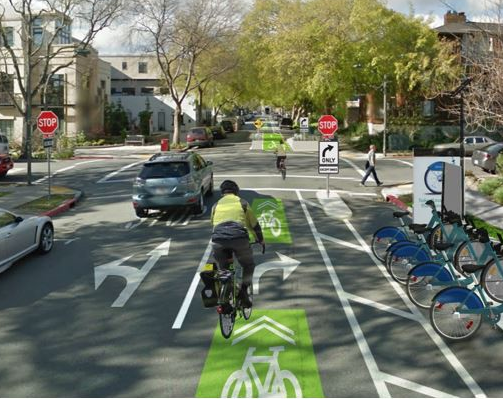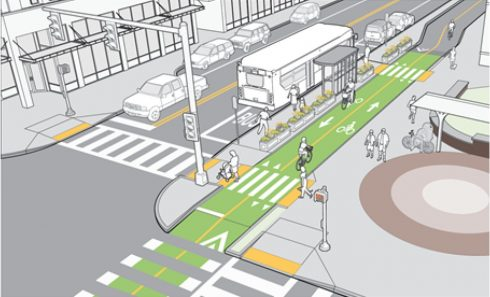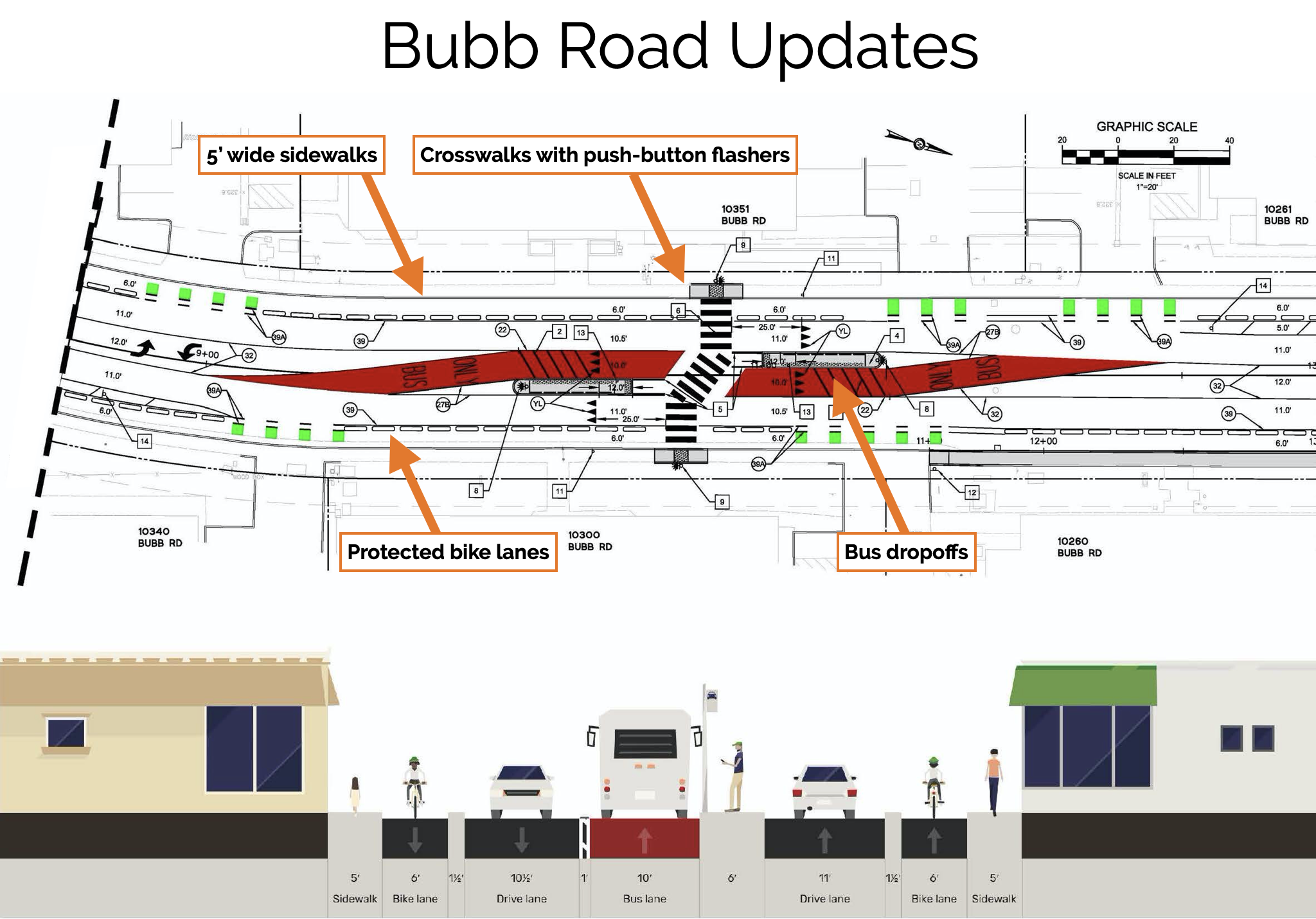
You may have heard the phrase “Complete Streets” design and wondered what this concept means. As defined by the U.S. Federal Highway Administration of the Department of Transportation (DOT), a “Complete Street is safe, and feels safe,” (emphasis added) for all users including “pedestrians, bicyclists, public transportation users, children, older individuals, individuals with disabilities, motorists, and freight vehicles.”
The concept of Complete Streets represents a shift in transportation design thinking, from making roadways safe and convenient for motor vehicle traffic to also including pedestrians, bicyclists, and users of public transportation.
Current federal policy supports Complete Streets design. A Complete Streets strategy has been adopted by many states and municipalities across the United States. The State of California adopted a Complete Streets design strategy with the passage of Assembly Bill No. 1358, known as the California Complete Streets Act of 2008. This California bill touts the climate and health benefits of walking, cycling and public transportation use. The City of Menlo Park recently changed the name of their Bike/Pedestrian Commission to Complete Streets Commission, though Cupertino City Council declined to three years ago. Many cities across the country have developed their own Complete Streets Design Handbooks. Complete Streets look different depending on the context of the environment with different results for rural, small town, suburban and urban areas. The AARP publishes its own Complete Streets document titled “Planning Complete Streets For An Aging America.”
The Federal DOT Complete Streets design incorporates strategies for Safety, Connectivity, Equity and Climate.
The Connectivity Strategy assures that pedestrians, bicyclists, and public transportation users can conveniently and safely reach their destinations, which can include a mass transit stop or station, via a

A sample design from Boston showing cars, buses, bikes and pedestrians all being considered as equal street users.
The Equity Strategy recognizes that the pedestrian, bicycle, and public transportation access network is not always equally developed, with many underserved areas lacking safe and connected networks to facilitate alternatives to motor vehicle use. Such areas need additional attention and funding resources to implement a Complete Streets Design. Cyclists know that the bicycle infrastructure on the west side of the Santa Clara Valley, which certainly need improvement, are far more developed and safer than the infrastructure on the east side of the valley.
The transportation sector is responsible for about one-third of U.S. greenhouse gas emissions. The Climate Strategy simply recognizes the need for reduction in greenhouse gas emissions, a goal which can be met in part by the development of safe networks which encourage walking, biking and public transportation use. This strategy also encourages the development of electrical vehicle charging infrastructure as part of a Complete Streets Design.

